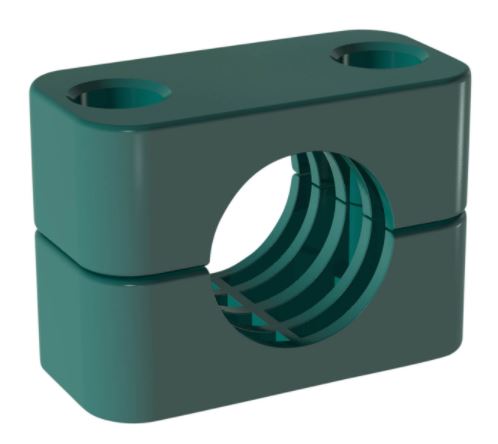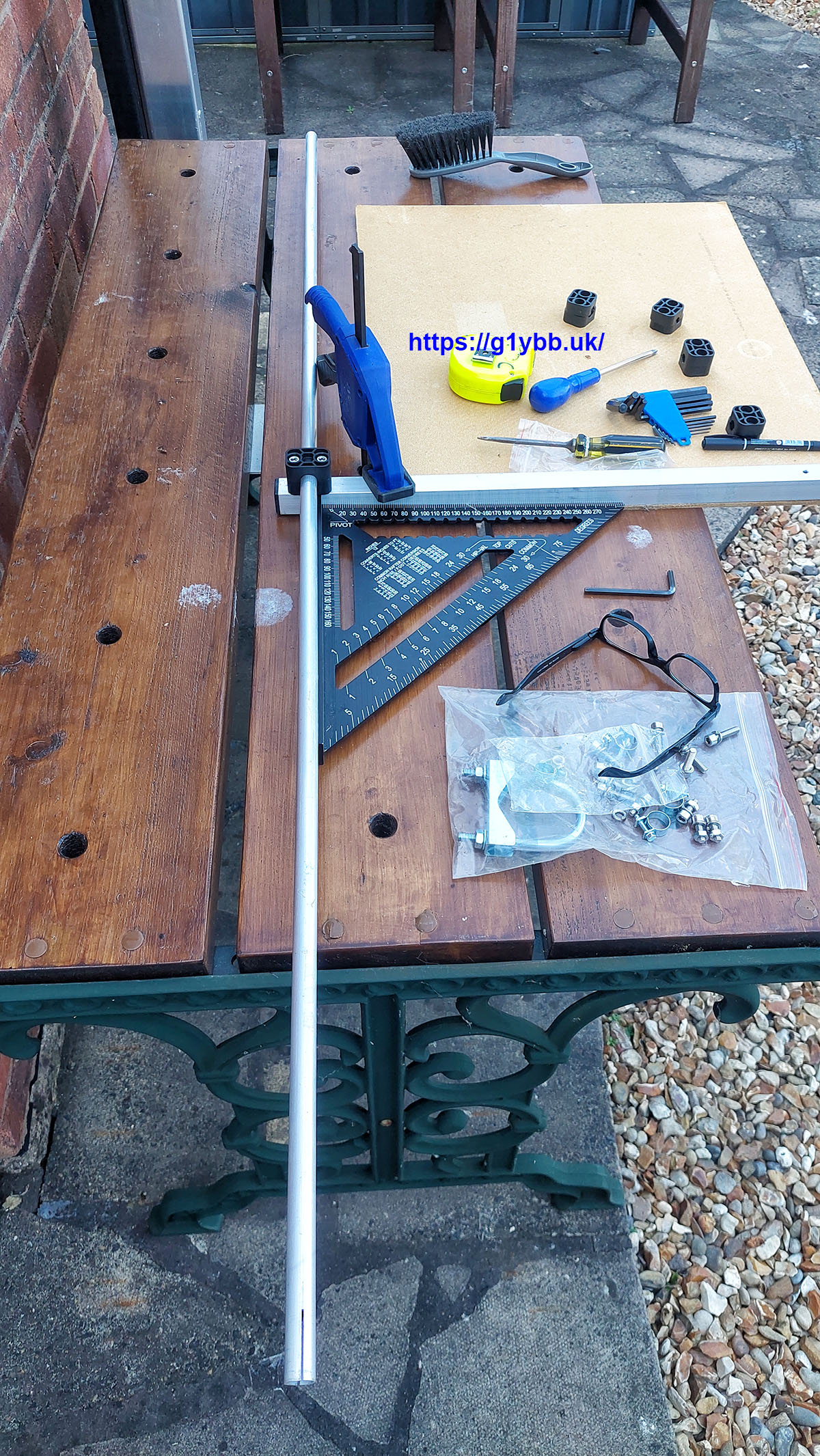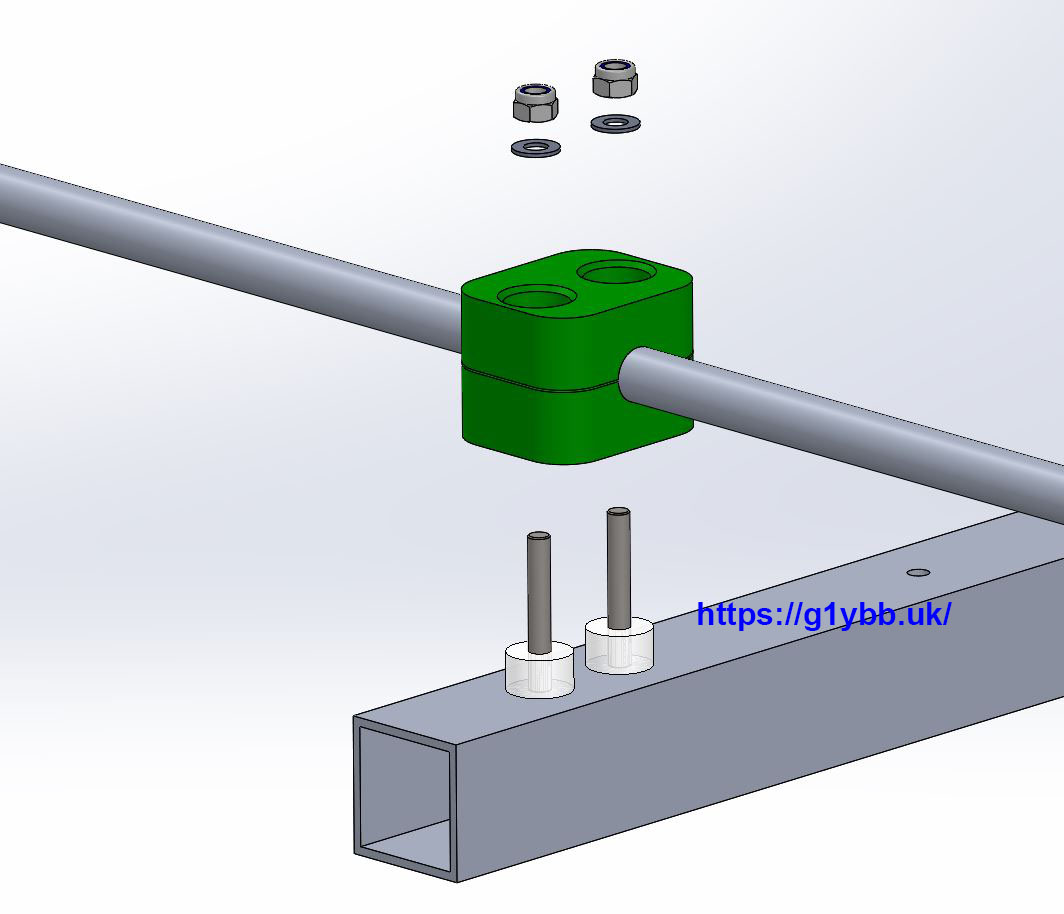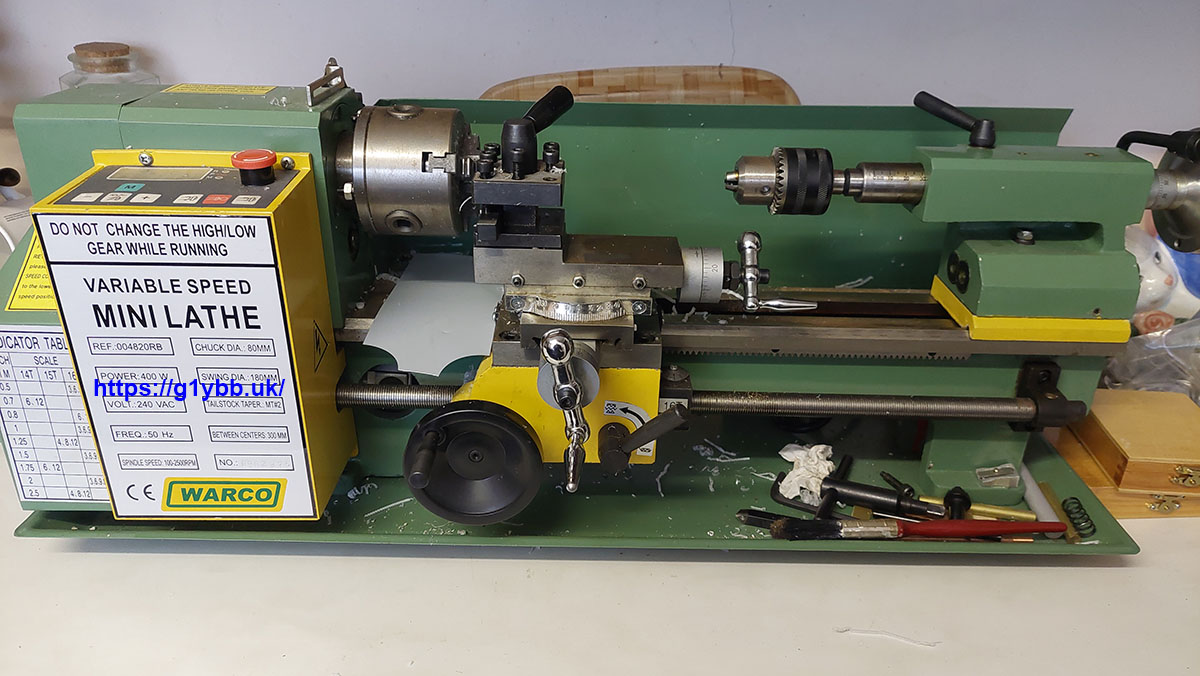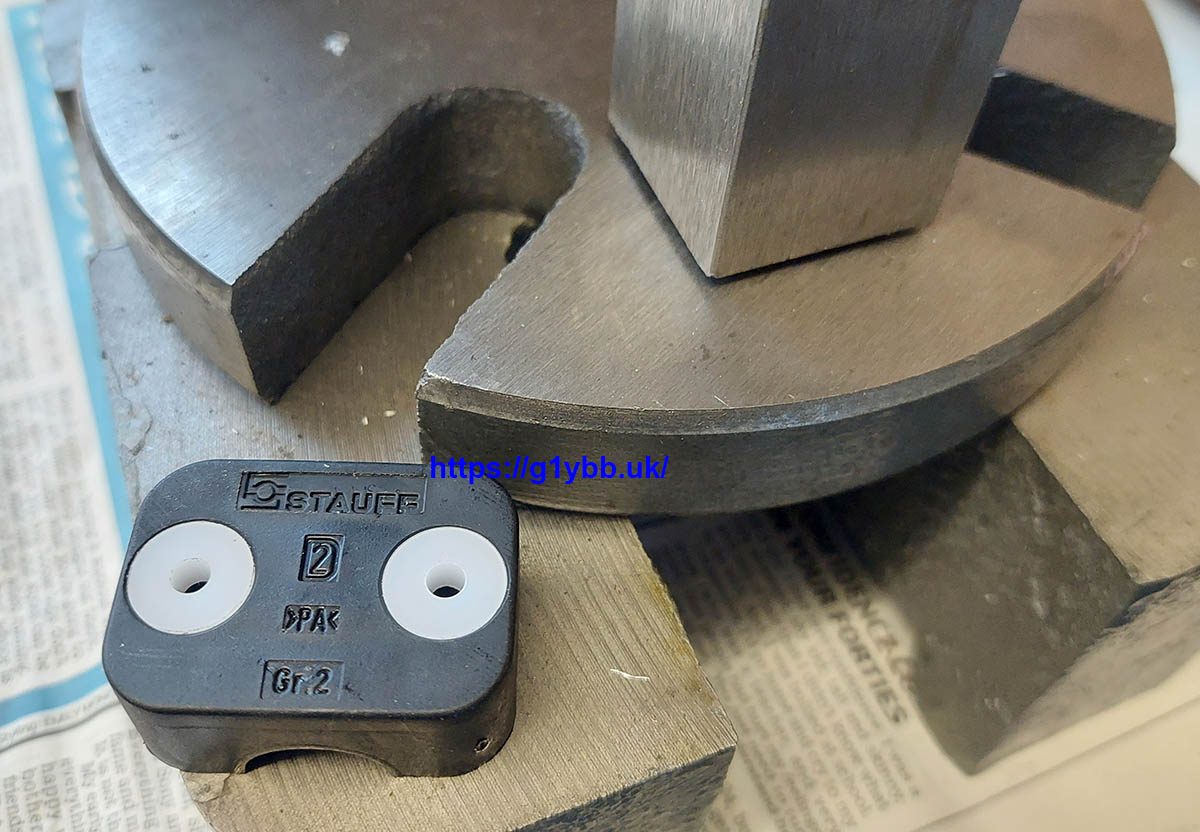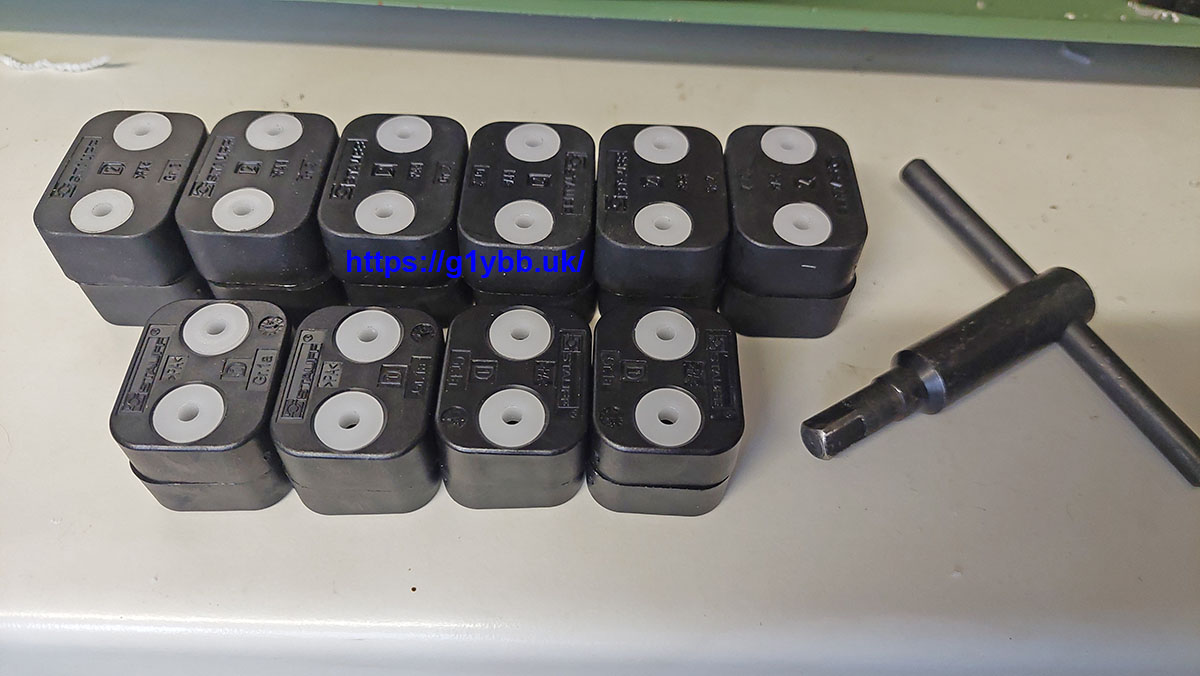So many commercial and home brew constructors use Stauff type clamps for attaching yagi elements to the boom but I have until now avoided these because I hate the huge bolt holes that are typically at least 6.5mm in diameter which is sloppy even on a grossly overkill M6 bolt. Of course these clamps were not designed for making antennas but are extremely useful as they come in pretty much every tube diameter there is. So after many builds avoiding these clamps I decided to come up with a way to use them that would satisfy my exacting standards. One night instead of being able to sleep I came up with the YBB washer.
Usually instead I have been making my own elements mounts in some way or other but I am building some HF beams and it’s just convenient to use off the shelf Stauff clamps so I decided I needed to do something about this issue. I recently assembled a commercial beam that had a tapped boom so next to no slop bolt to boom but you could move the element side to side about ±6 inches or more at the ends of a 50MHz element. I had to use a square to mount them:
So I set about as usual pondering (usually when I should be sleeping!) over how I could stop all the hideous play. Another good thing for me about the Stauff clamps is that they provide 3D CAD models for free download so I was able to download some and do some thinking. I prefer to use much smaller bolts like M4 for my antennas which is more than strong enough in a good design. My 2m and 70cms elements are held on with 2x M3 bolts which is also more than strong enough.
The recess in each half for the bolt head according to the 3D model is 12mm diameter, so I decided that a simple solution would be 2 delrin or similar washers 12mm round with a 4mm bore fitted to the half nearest the boom/mounting plate. They are not needed in the top half because the top clamp will self centre onto the element tube:
That would do it I decided. I have a very small lathe and I checked I can easily buy rod in 12mm diameter.
Next step was to get some Stauff clamps ordered to ensure they matched the 3D models I had. On measuring the bolt head recess they were actually more like 12.4mm (at the top anyway), probably due to needing slight draught for injection moulding. Hmm. Next size rod size was 14mm. I do have the lathe, but I’d rather not turn down enough rod to make dozens of washers. I wanted to just drill and part off. I decided to check the supplier notes on tolerances. Some good news there! as most of these materials are very often turned down, the tolerance was stated as +0.2 to +0.7mm. Good stuff. Let’s get some in. I ended up ordering acetal for its low absorption quality and as it was very cheap!
Once it arrived I did a test fit and the bar fitted a couple of mm deep into the bolt head recess then started getting tight, that draught taper I imagine. Ideal. So it was off to my baby lathe and get to work, first running a 4mm drill up the centre then parting off 5mm lengths:
Next to press them in. I discovered that the 16mm and 12.7mm Stauff clamps had an ever-so-slightly larger bore bolt head recess than the 10mm Stauff did. And coupled with the slight edge burr from parting off (seen in pic above) it would have been impossible to press them in by hand. However, I already have an arbour press that I got for forming bent box section boom supports, so in a couple of seconds they were fitted easily:
Soon I had a complete set of Stauff clamp pairs with captive washers on one half only:
The proof of the pudding is in the eating or something along those lines, so I thought I best test them! The day before I had drilled out the mounting plates for the 2 beams we are making so I clamped one in the drill vice and just fitted two M4 bolts into the holes to see how it worked:
That’ll do, as the Yorkshire based advert says… I am happy now that single clamps on the boom will hold a 50/70MHz element securely and square. And once you get to 2 clamp pairs on a 28MHz element or bigger there should be no play at all.
Many might say that this is all overkill and 1000s of antennas have been made and used very successfully with none of this effort. This is of course true but I like to build ALL my antennas to exacting UHF accuracy including the HF ones. I think attention to detail is worth it and my VHF/UHF contesting results using my home brew antennas makes it worthwhile.
